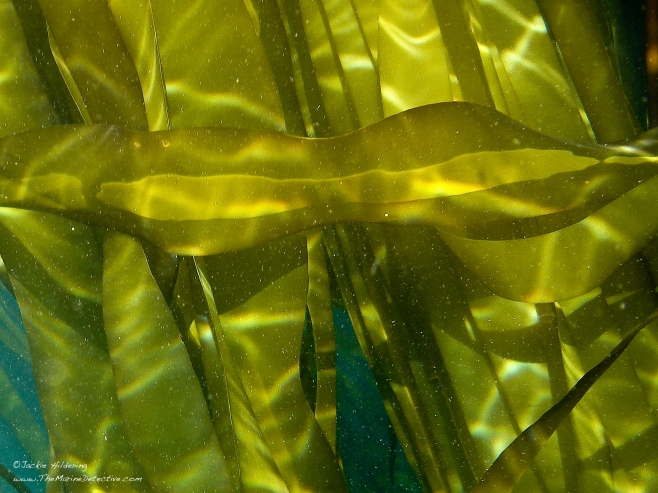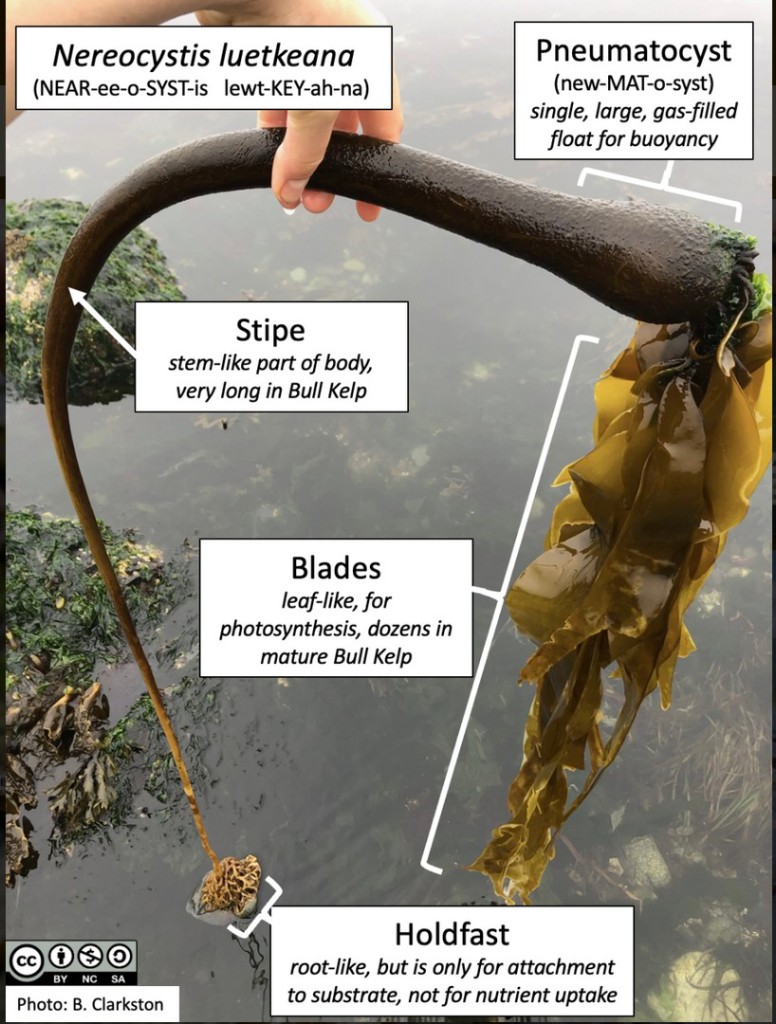Kelp Lace? Bryozoans.
And so it begins.
It’s the time of year when the annual kelps like Bull Kelp begin to break down. It’s then that Kelp-encrusting Bryozoans really get a chance to colonize the kelp as you see in these photos.


Every little box is an individual animal. It’s a “zooid”. The oldest member is in the middle and the others all originated from that one by asexual reproduction.

The zooids filter feed on plankton with the tentacles you see in this wonderful video by friend Karen Johnson. These crowns of tentacles are known as lophophores.
“Kelp-encrusting Bryozoan” (Membranipora membranacea) is also known as “Kelp Lace Bryozoan”. It’s no mystery how either common name was inspired. Each circular colony is approximately 20 cm wide.
If you are lucky enough to live near the Ocean, look at the kelp that washes ashore for these colonies. The colonies in these photographs where on Split Kelp (Laminaria setchellii) and Bull Kelp (Nerocystis luetkeana).

What on earth is a “bryozoan”?
From Beachkeepers: “Bryozoans are colonial animals that arrange themselves in circular (radial) fashion, often with the oldest (and first to settle) individual in the middle. . . . The ‘box’ of the zooid is made of either a tough protein (like what you would find in crab shells) called chitin, or what you would find in coral reefs, calcium carbonate. This body box has an opening where the bryozoans extend their feeding apparatus (that looks a lot like a sea anemone) called a lophophore. Yes, they have predators! [Some species of] nudibranch will eat them, though they can reproduce asexually to form the colony back to size after a nudibranch has been grazing on them. Sometimes, when they grow back, they’ll even grow chitonous spines on their body walls to discourage the nudibranchs from coming back. These spines usually form on the individuals on the outside edge of the colony.”



Detail about this bryozoan species – Kelp-encrusting Bryozoan.
From Invertebrates of the Salish Sea: “Bryozoans start from a single individual zooid (an ancestrula) which repeatedly reproduces asexually to form a colony. In this species, the oldest individual is in the middle. Colonies of this species usually begin to be noticeable in late spring and grow through summer into fall. By fall they may form extensive crusts on the kelp and many colonies have merged with one another. In many bryozoans there are various types of zooids but in this species there is only one type of zooid which serves for feeding, for reproduction, and for defense. The colony appears to be a simultaneous hermaphrodite, or male zooids may develop first. They do not brood their young. Eggs are fertilized then released, and quickly develop into cyphonautes larvae which may feed and develop as plankton for several months. The larvae settle when they encounter kelp such as Laminaria or water with an excess of potassium ions. The small white nudibranch Doridella steinbergae [reclassified to Corambe steinbergae] may be found living and feeding on these colonies but it blends in so well it is difficult to see . . .”
Note there is a second similar looking cryptic nudibranch that can found on these bryozoans and that is Corambe pacifica. Corambe pacifica has a notch at the back. Corambe steinbergae does not.
I have never managed to find these cryptic nudibranchs. Grateful to Karolle Wall and Robin Agarwal for their photos below.




What happens to the kelp?
It is the natural cycle of kelp species like Bull Kelp, that at this time of the year, the large version (the sporophyte) begins to break down. Spore packets drop to the bottom of the Ocean which create a different version of the kelp. It’s Alternation of Generations and here is my blog about that wonder. Other kelp species like Giant Kelp are not annuals. They remain year round.

All photos (other than those by Karolle Wall and Robin Agarwal) were taken in early August near northeast Vancouver Island in Kwakwaka’wakw Territory ©Jackie Hildering.





Additional information:
Hageman, Steven J., et al. “Bryozoan Growth Habits: Classification and Analysis.” Journal of Paleontology, vol. 72, no. 3, 1998, pp. 418–36. JSTOR
Washington State Department of Ecology, Moss animals: Animals in plant disguises!
Note: Some report that this species of bryozoan is an invasive in the Atlantic. However, “recent genetic studies indicate that this species is a complex of a number of long-separated clades. The only verified invasion is its introduction from the Northeast Atlantic to the Northwest Atlantic” (Source: Nemesis).














